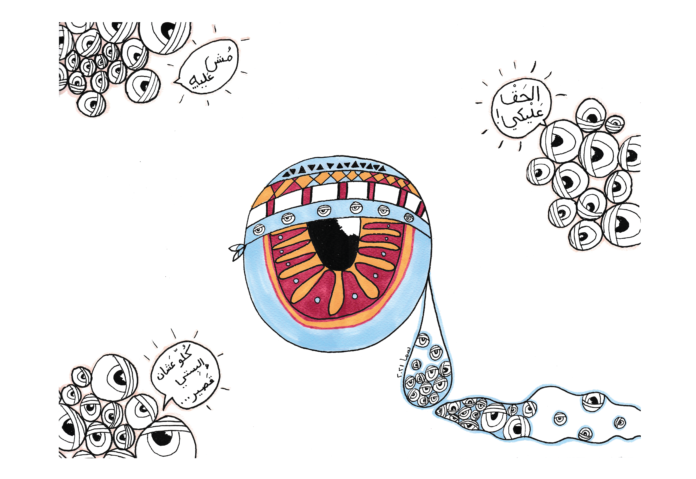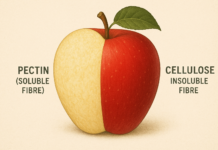An Eye for Art,
An Eye for Social Justice
By Family Flavours
Jordanian artist and teacher Sama Dudin opens our eyes to art education as a matter of social justice.
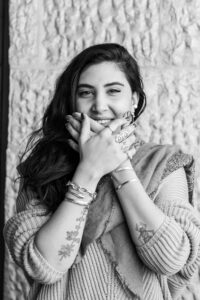
Inquiry-based learning
Dudin, whose Master’s is in Child Study and Education with a specialisation in Art for Social Justice, used art to tackle social issues in Canada before moving back to Jordan. The Inquiry-Based model of education encourages students to investigate themes they are passionate about, explains Dudin. “Once they find a topic of interest, they explore it further through research,” she says, adding, “This educational model moves away from a traditional art curriculum and provides self-direction and freedom of expression.”
During her time in Canada, Dudin used various art techniques and mediums to showcase her call for equality and justice and even sent her work to local municipalities voicing her and her students’ views. She stresses the process of creating art and relaying a message instead of focusing solely on the end product. “I remind my students that the journey of creating art matters more than the creation itself,” she asserts.
AYN
Dudin has always been mesmerised by eyes. “They can sometimes be more expressive and articulate than words,” she says. “They are a portal into our inner souls, evoking emotions that otherwise cannot be explained,” she adds, talking about the name behind her initiative, AYN (meaning eye in Arabic). AYN explores social issues in Jordan via hand and digital illustrations to create awareness and start a constructive conversation within communities.
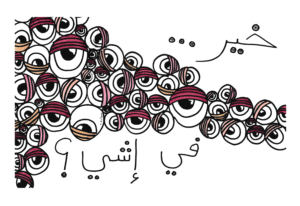
EIB
Through Ayn, The EIB (the Arabic word for shame) collection depicts the eye as a metaphor for a “society that is always on the lookout, waiting for an opportunity to shame members of its community,” describes Dudin. She continues:
It sometimes transforms into an octopus, representing the various facets of society’s opinions. Alternatively, the eye takes the shape of a fish, illustrating how certain social taboos are deeply embedded in the sea of shame. The eye also takes the form of a bee, reflecting the buzzing nature of gossip in society.
Dudin uses shades and hues of pink in many of her illustrations to depict how shame is often directed more towards females. “The illustrations are simple cartoons, created using alcohol-based markers, to reflect the satirical nature of the messages,” she tells us. Some of the messages relayed in the pieces are:
• “Yeeee shu eib” (meaning “Oooh, how shameful)”
• “Mama, can I see a psychiatrist? I am not well” with the mother responding, “What will society say about us?”
• “You are 30 and not married yet? What will people think of you!”
Dudin’s EIB collection resonated with people on social media who wrote to her about how they suffered greatly from the crippling effects of shame inflicted by society. “They had to make huge compromises simply due to societal pressures,” she recalls. Following these online conversations, Dudin expanded her art scope, creating a dialogue between the eyes depicting societal norms restricting personal freedom.
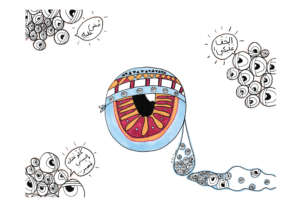
An eye on the future
Dudin hopes to collaborate with other local artists on similar projects and explore more societal issues like poverty, political freedom, corruption and more.
In the meantime, she will continue to produce art that inspires and empowers because, she reminds us, “We have a common cause that will better our lives if we tackle it together.”
Sidebar
Be inspired
You can view Sama Dudin’s artwork in a solo exhibition at Foresight32 Art Gallery until 15 March, or on Instagram @ayn.jo and www.samadudin.com
Sidebar
Benefits of art education for social justice
• Broadens society’s understanding of injustices
• Highlights through art the stories and experiences of vulnerable groups and individuals
• Promotes tolerance among students
• Offers opportunities to denounce oppressive practices
• Provides a way to engage and empower individuals and communities to take action around a social issue



